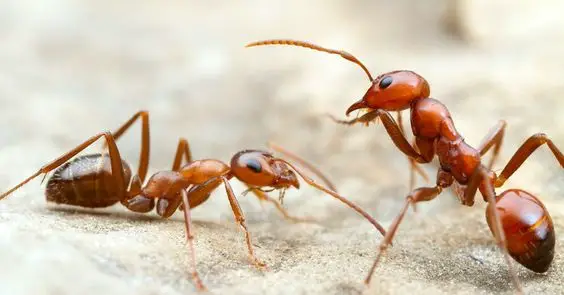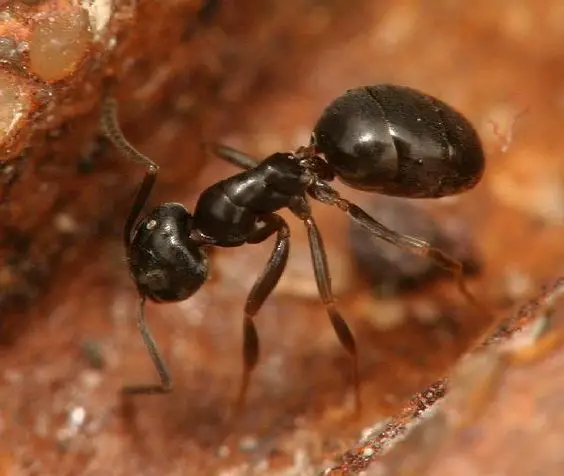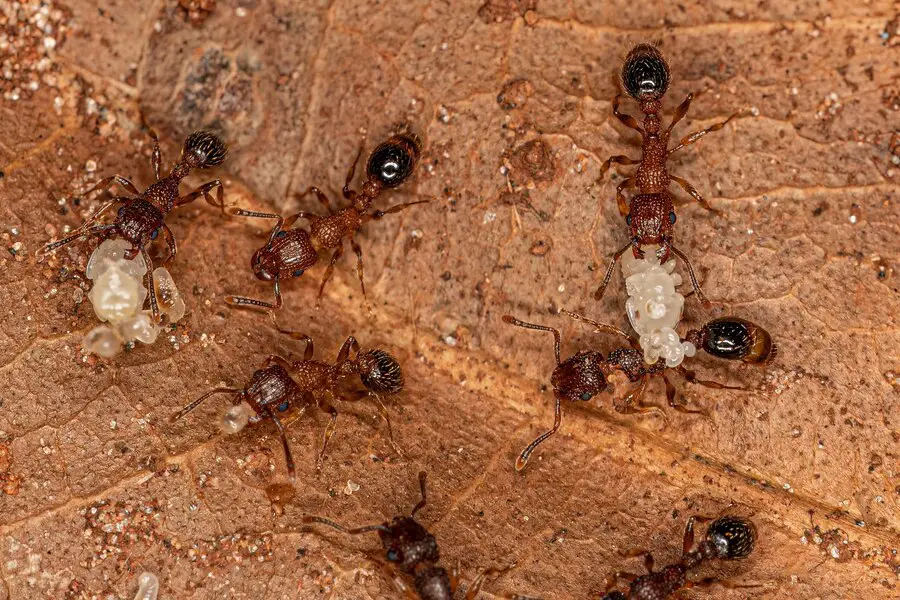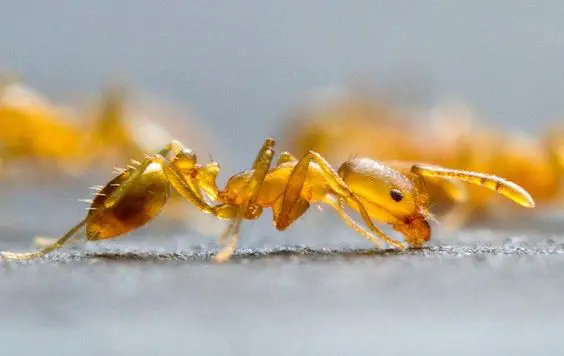Ants are everywhere in Michigan. They’re in our homes, our gardens, and even our parks. But most of us don’t really think about them much.
We see them as pests, or maybe as something to be curious about. But ants are actually amazing creatures that play an important role in the Michigan ecosystem.
From the tiny sugar ants that invade our kitchens to the large carpenter ants that damage our homes, ants are a diverse group of insects that can be found in all corners of the state.
In this article, we’ll take a closer look at the ants of Michigan. We’ll learn about their different species, their habitats, and their impact on the environment.
Most Common Ants in Michigan
The following are some of the most common ants found in Michigan:
Field Ants in Michigan
In Michigan field ants are not typically pests, but they can be a nuisance if they nest in your yard or garden.

- Size and Color: Field ants are typically 1/4 to 1/2 inch long. They are black or reddish brown and black.
- Habitat: Field ants are found throughout Michigan, in both urban and rural areas. They prefer to nest in open fields, meadows, and gardens. They will also nest in wooded areas, but they prefer areas that are open to sunlight.
- Biodiversity: Michigan’s got a bunch of different field ant species, which adds to the whole bug diversity in the state. They play different roles in nature, like spreading seeds and helping with soil stuff, and they interact with other critters in the area.
- Complications: Field ants can be a nuisance pest in homes and businesses. They can be a bit of a headache when they decide to set up camp near houses.
- Impact: Field ants can have a number of negative impacts on the environment, agriculture, and human health. They can damage crops and trees by feeding on their leaves and fruits.
Odorous House Ants

Odorous house ants (Tapinoma sessile) are a common household pest in Michigan.
- Size & Color: Odorous house ants are small ants, typically measuring 1/8 to 1/4 inch in length. They are reddish-brown to black in color.
- Habitat: Odorous house ants are commonly found in homes and businesses throughout Michigan. They prefer to nest in moist, protected locations, such as under floors, behind walls, and in voids around pipes and electrical outlets.
- Biodiversity: There is only one species of odorous house ant, Tapinoma sessile, They are particularly common in warm, humid climates, such as Michigan.
- Complications: Odorous house ants can be a significant nuisance pest in homes and businesses. They can become a major problem in kitchens, bathrooms, and other areas where food and crumbs are present.
- Impact: Odorous house ants can have a number of negative impacts on human health, sanitation, and the overall quality of life. Their presence can make it difficult to maintain a clean and hygienic environment, and their bites and stings can be a source of discomfort and irritation.
Pavement Ants in Michigan

Pavement ants are not typically pests, but they can be a nuisance if they nest in your driveway or walkway.
- Size and Color: Pavement ants are small ants, typically measuring 1/16 to 1/8 inch in length. They are reddish-brown to black in color, and their bodies are shiny and smooth.
- Habitat: Pavement ants are commonly found in urban and suburban areas, particularly in sidewalks, driveways, and other areas with concrete or asphalt. They prefer to nest in moist, protected locations.
- Biodiversity: There are several species of pavement ants found in Michigan, including the following:
- Tetramorium caespitum (Red Pavement Ant)
- Tetramorium longipes (Long-legged Pavement Ant)
- Pheidole megacephala (Giant Black Ant)
- Tapinoma erraticum (Argentine Ant)
- Complications: Pavement ants can be a nuisance pest in homes and businesses. Pavement ants can easily enter homes and businesses through cracks and crevices.
- Impact: Pavement ants can have a number of negative impacts on human health, sanitation, and the overall quality of life. Their presence can make it difficult to maintain a clean and hygienic environment, and their bites and stings can be a source of discomfort and irritation.
Pharaoh Ants in Michigan

Pharaoh ants are a major nuisance because they can infest homes and other buildings.
- Size and Color: Pharaoh ants are small, typically measuring 1/16 to 1/12 inch in length. They have a light yellow to reddish-brown color with darker markings on their abdomen. Only the queen and males have wings.
- Habitat: Pharaoh ants prefer to nest in warm, humid environments, such as kitchens, bathrooms, and electrical outlets. They can also be found nesting in outdoor areas, such as under mulch, in potted plants, and in cracks and crevices.
- Biodiversity: There is only one species of Pharaoh ant: Monomorium pharaonis.
- Complications: Pharaoh ants are a major nuisance pest. They can infest homes and businesses. Pharaoh ants can easily enter homes and businesses through cracks and crevices, and they can quickly establish colonies indoors. Pharaoh ants have been linked to the spread of diseases, such as salmonella and dysentery.
- Impact: Pharaoh ants can have a number of negative impacts on human health, sanitation, and the overall quality of life. Their presence can make it difficult to maintain a clean and hygienic environment, and their bites and stings can be a source of discomfort and irritation.
Carpenter Ants in Michigan

Carpenter ants are one of the most destructive pests in Michigan. They can cause significant damage to homes and other structures by excavating tunnels in wood.
- Size & Color: Carpenter ants are generally larger than Pharaoh ants, ranging from 1/4 to 1 inch in length. They vary in color, but most commonly, they are black, reddish-brown, or a combination of both.
- Habitat: Carpenter ants prefer to nest in moist, protected locations, often inside wooden structures. They tunnel through wood to create their nests, which can cause significant damage to buildings.
- Biodiversity: There are over 1,000 species of carpenter ants worldwide, but only a few are found in Michigan.
- Complications: Carpenter ants can be a serious pest in homes and businesses. Carpenter ants tunnel through wood to create their nests, which can cause significant structural damage to buildings. Carpenter ants can bite and sting if they feel threatened.
- Impact: Carpenter ants can have a number of negative impacts on human health, property damage, and the overall quality of life. Their presence can make it difficult to maintain a clean and hygienic environment, and their damage to wooden structures can be costly to repair.
Conclusion
Ants are amazing creatures that play an important role in the Michigan ecosystem. While some ants can be pests, most ants are beneficial.
By understanding the different types of ants in Michigan and their impact on the environment, we can better appreciate these amazing creatures.



